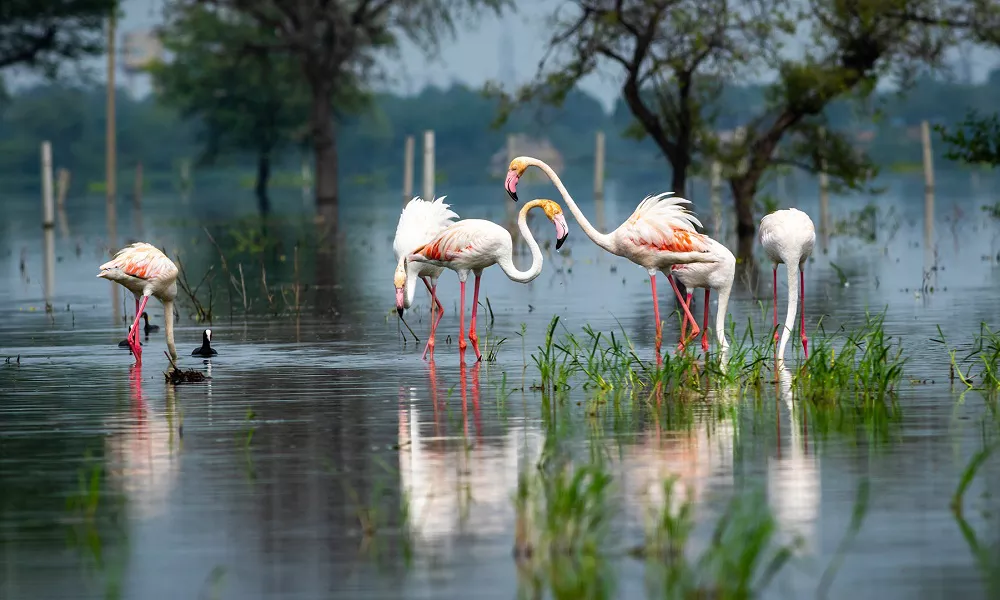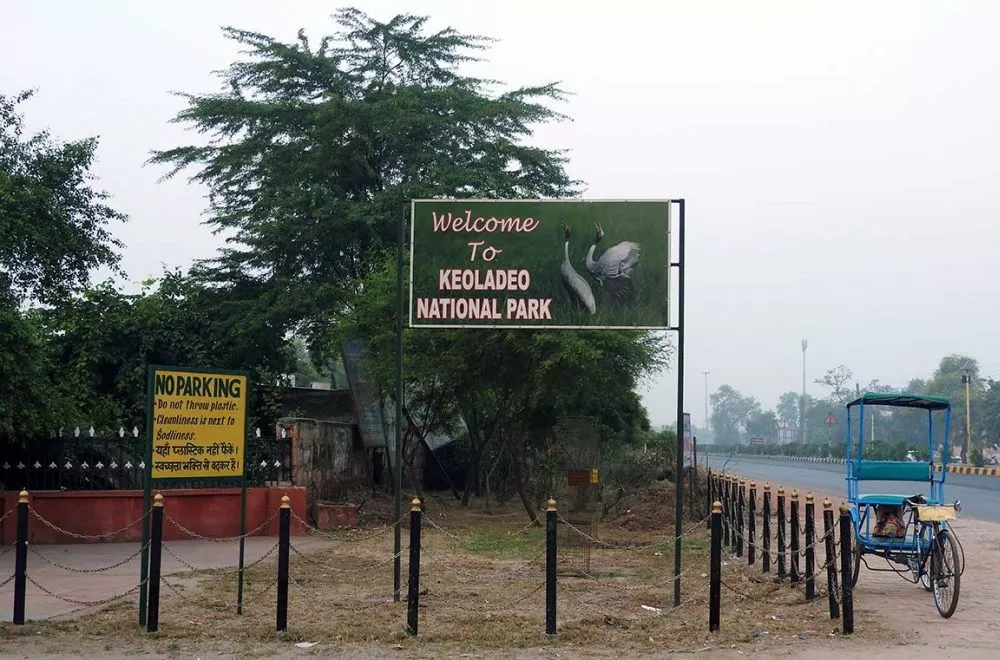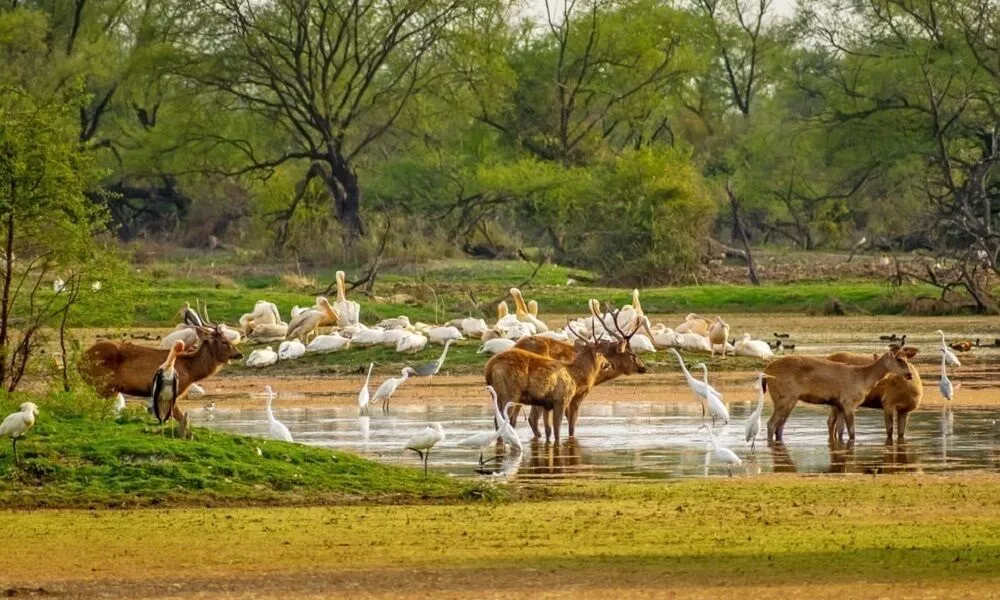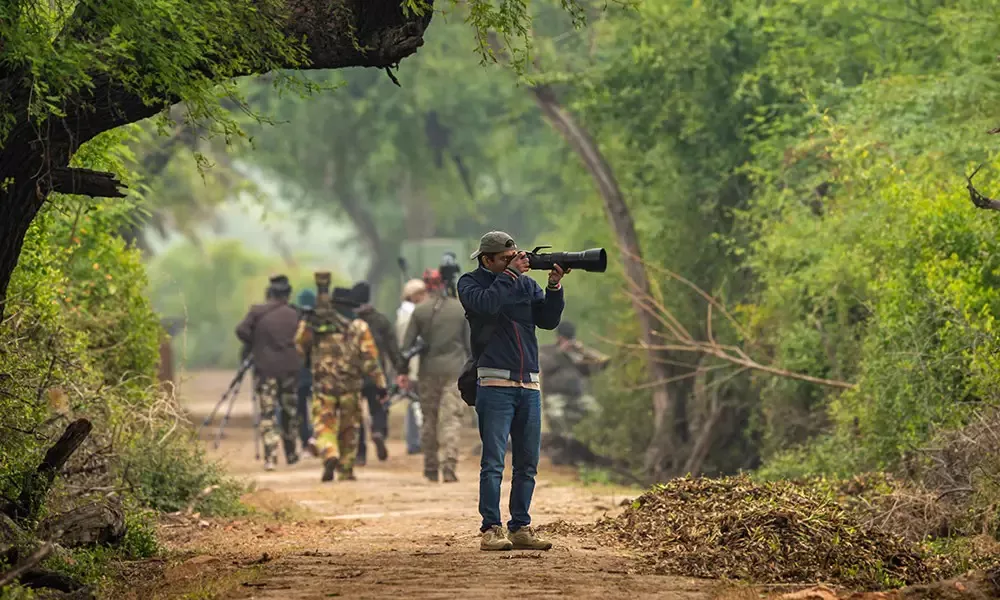Bharatpur Bird Sanctuary, also known as Keoladeo National Park, is one of the most famous bird sanctuaries in the world. Located in the Bharatpur district of Rajasthan, India, this sanctuary is a UNESCO World Heritage Site. It is a haven for bird watchers, nature lovers, and photographers. The sanctuary is home to thousands of birds, especially during the winter season when migratory birds arrive from distant lands.
Bharatpur Bird Sanctuary History and Significance
Origins and Early Days
The origins of Bharatpur Bird Sanctuary date back to the 18th and 19th centuries. The area was originally a natural depression that would get flooded during the monsoon season. Maharaja Suraj Mal, the ruler of Bharatpur, constructed the Ajan Bund (dam) between 1726 and 1763 to store water. This created a large wetland, which soon became a favorite hunting ground for the Maharajas and British officials.
Transition to a Protected Area
The sanctuary was used as a royal duck shooting reserve until the mid-20th century. In 1956, the government declared it a bird sanctuary. It was later designated as a national park in 1982 and recognized as a UNESCO World Heritage Site in 1985 due to its rich biodiversity and importance for migratory birds.
Conservation Efforts
Over the years, several conservation initiatives have been implemented to protect the delicate ecosystem of the park. These include water management, habitat restoration, and anti-poaching measures. The sanctuary is especially known for its efforts to conserve the critically endangered Siberian Crane, although sightings have become rare in recent years.
Bharatpur Bird Sanctuary Geography and Landscape
Location and Area
Bharatpur Bird Sanctuary is situated near the city of Bharatpur in Rajasthan, it is well connected by road and rail. The nearest airport is in Agra. Tourists can easily reach the sanctuary by bus, train, or car. It covers an area of about 29 square kilometers, with approximately 11 square kilometers consisting of swampland. The rest of the park is made up of grasslands, woodlands, and scrublands.
Wetland Ecosystem
The sanctuary is a man-made and well-managed wetland. The water is supplied through a system of dykes and sluices from a reservoir outside the park. This allows for a variety of habitats, supporting a diverse range of bird and animal species.
Climate
The climate in Bharatpur is semi-arid. Summers are hot and dry, while winters are mild and pleasant. The monsoon season brings rain, which is crucial for maintaining the wetland ecosystem. The best time to visit is from October to March, when the migratory birds arrive.
Bharatpur Bird Sanctuary Flora and Fauna
Bharatpur Bird Sanctuary is home to more than 370 species of birds, making it one of the richest bird areas in the world. Apart from birds, the park also supports a wide variety of plants, mammals, reptiles, amphibians, and insects.
Flora
Over 370 species of plants, including aquatic plants, grasses, and trees
Common trees: Kadam, Jamun, Babul, Neem, Ber, and Pilu
Aquatic vegetation provides food and shelter for birds and other animals
Fauna
Besides birds, the sanctuary is home to:
- 50 species of fish
- 25 species of reptiles (snakes, lizards, turtles)
- 7 species of amphibians
- 30 species of mammals, including deer, nilgai (blue bull), wild boar, and small carnivores
Birds of Bharatpur
Resident Birds
The park is an excellent breeding site for many resident birds. Some of the commonly seen resident birds include:
- Painted Stork
- Purple Heron
- White Ibis
- Eurasian Spoonbill
- Indian Grey Hornbill
- Marshall’s Iora
- Warblers and Babblers
Migratory Birds
Bharatpur is famous for its migratory birds that arrive from distant lands during the winter months. These birds travel thousands of kilometers from Siberia, Central Asia, Afghanistan, Turkmenistan, and China to escape the harsh winters.
Notable Migratory Species
- Siberian Crane (Critically Endangered, now rarely seen)
- Bar-headed Goose
- Greylag Goose
- Common Teal
- Northern Shoveler
- Gadwall
- Common Pochard
- Wigeon
- Pelicans (Spot-billed and Great White)
- Demoiselle Crane
- Sarus Crane
- Ducks, Waders, and many more
Raptors and Other Birds
The sanctuary also hosts several species of raptors and other birds:
- Osprey
- Peregrine Falcon
- Pallas’ Sea Eagle
- Short-toed Eagle
- Tawny Eagle
- Imperial Eagle
- Spotted Eagle
- Crested Serpent Eagle
Things to Do in Bharatpur Bird Sanctuary
Bird Watching:
Best Time to Visit Bharatpur Bird Sanctuary.
- August to November: Best for spotting resident breeding birds
- October to March: Best for seeing migratory birds from Eurasia and Central Asia
Nature Walks:
Walking through the park is peaceful and allows close encounters with nature.
Cycle or Rickshaw Rides:
Bicycles and cycle-rickshaws are available for hire. Rickshaw pullers often double as guides.
Photography:
The sanctuary offers excellent opportunities for bird photography and observation. Early mornings and late afternoons are the best times for birdwatching, as birds are most active during these hours.
Boating (seasonal):
Boating is allowed in some parts of the sanctuary during the monsoon and post-monsoon seasons.
Bharatpur Bird Sanctuary Conservation and Challenges
Importance of Water Management
The sanctuary’s ecosystem depends on a regulated water supply. Water is brought in from outside sources, and its availability can vary depending on rainfall and upstream usage. Proper water management is essential for maintaining the wetland and supporting the diverse bird population.
Threats to the Sanctuary
Water scarcity due to poor monsoons or diversion of water for agriculture
- Encroachment and illegal grazing
- Pollution and habitat degradation
- Climate change affecting migration patterns
Conservation Success Stories
Despite challenges, Bharatpur Bird Sanctuary has achieved several conservation successes:
- Restoration of wetland habitats
- Increase in bird diversity and numbers after good monsoon years
- International recognition as a Ramsar Wetland Site and UNESCO World Heritage Site
Visitor Information
How to Reach
- By Air: Nearest airport is Agra, about 56 km away
- By Train: Bharatpur Junction is well connected with major cities
- By Road: Bharatpur is accessible by road from Delhi, Agra, and Jaipur
Bharatpur Bird Sanctuary Tickets and Opening Times
Opening Times: 6:30 am to 6:30 pm (summer), 7:00 am to 5:30 pm (winter)
Ticket Prices: This renowned park has different entry fees for visitors of different nationalities. Indian citizens pay Rs. 75 for admission, whereas foreigners pay Rs. 500.
Facilities
- Visitor centers with information and maps
- Guided tours and rickshaw rides
- Restrooms and refreshment stalls
- Accommodation options nearby, ranging from budget to luxury hotels
Tips for Visitors
- Wear comfortable walking shoes and carry water
- Bring binoculars and a camera for birdwatching
- Respect wildlife and avoid disturbing birds, especially during breeding season
- Follow park rules and do not litter
- Hire local guides or rickshaw pullers for a better experience
Nearby Attractions
While visiting Bharatpur Bird Sanctuary, you can also explore:
- Lohagarh Fort: Historic fort in Bharatpur city
- Deeg Palace: Beautiful palace and gardens, about 32 km from Bharatpur
- Fatehpur Sikri: UNESCO World Heritage Site, about 22 km away
- Taj Mahal, Agra: World-famous monument, about 56 km away
Conclusion
Bharatpur Bird Sanctuary is a treasure trove of biodiversity and a paradise for bird lovers. Its unique wetland ecosystem supports a vast array of bird species, both resident and migratory. The sanctuary’s rich history, effective conservation efforts, and accessibility make it one of the best places in India to experience the wonders of nature. Whether you are a seasoned birdwatcher, a photographer, or a nature enthusiast, a visit to Bharatpur Bird Sanctuary promises an unforgettable experience.
Frequently Asked Questions
1. What is the best time to visit Bharatpur Bird Sanctuary?
The best time to visit is from October to March, when migratory birds arrive from distant countries. Resident birds can be seen from August to November.
2. How many bird species can be seen in the sanctuary?
More than 370 species of birds have been recorded in Bharatpur Bird Sanctuary.
3. Is the sanctuary suitable for children and families?
Yes, the park is family-friendly and offers safe walking and cycling paths. Guided tours are available for all age groups.
4. Are there accommodation options near the sanctuary?
Yes, there are many hotels and guesthouses near the park, ranging from budget to luxury options.





 Facebook
Facebook  Instagram
Instagram  Youtube
Youtube 